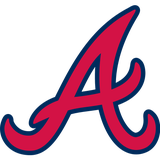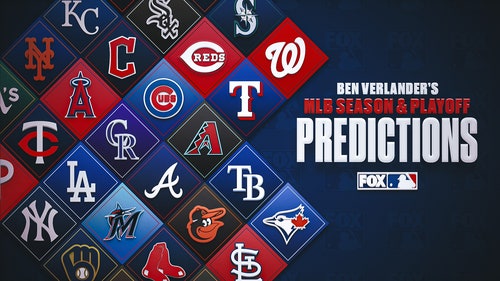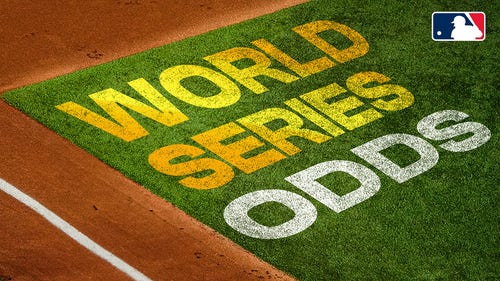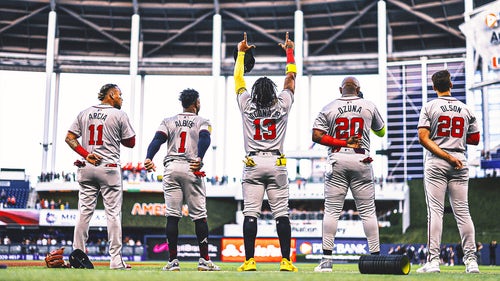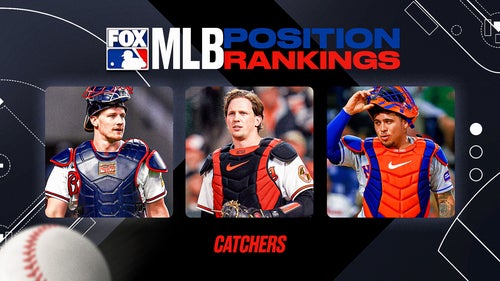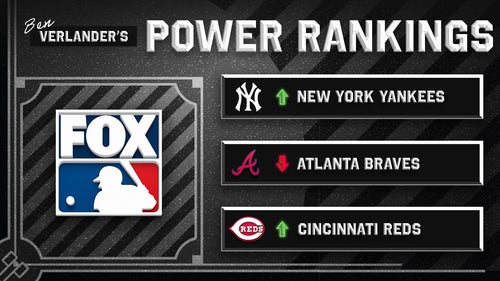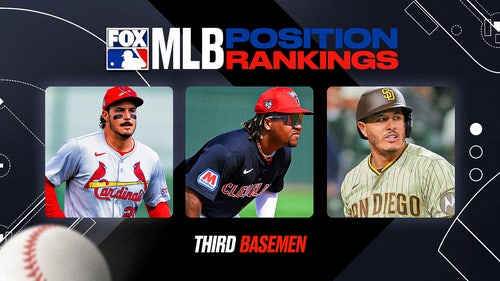
Atlanta Braves Scouting Report on IF Ozzie Albies
Mar 7, 2016; Dunedin, FL, USA; Atlanta Braves shortstop Ozzie Albies (87) works out prior to the game against the Toronto Blue Jays at Florida Auto Exchange Park. Mandatory Credit: Kim Klement-USA TODAY Sports
Ozzie Albies shot up the Atlanta Braves depth chart with a big spring last year and then had a very solid 2016. Will he see Atlanta in 2017?
Player Profile
The Atlanta Braves signed Albies out of Curacao, the same tiny island that produced Andruw Jones and a number of other major leaguers, but the Braves have a number of players in their minor league system who still claim they knew baseball and the Braves due to Andruw as they grew up.
Ozzie was sent to the Gulf Coast League to open the 2014 season, and after hitting well for a few weeks, he earned a promotion to Danville in the Appalachian League.
Combined between the two level, Albies hit .364/.446/.444 with 1 home run and 22 stolen bases, posting a 28/23 BB/K ratio.
Albies moved to Rome to open 2015, and he was tearing up the South Atlantic League before injuring his thumb in early August and missing the last month of the season.
His numbers with Rome were .310/.368/.404 with no home runs and 29 steals with a 36/56 BB/K. His exploits received notice on a national level as well as Baseball America ranked him as the #63 overall prospect, MLB.com rated him at #29, and Baseball Prospectus rated him as the #37 prospect in the game.
After an incredible spring training that left many unsure if he or Dansby Swanson would be the future at the shortstop position, Albies started his season at AA. After less than a month, Albies earned his way up to AAA.
Albies had some struggles in AAA, which some were attributed to off-field issues that led to the release of some players with the Gwinnett roster, but he really found his stride after the team moved him to second base. He went back down to Mississippi to team with Swanson up the middle, and the two of them formed a dynamic duo for a month and a half until Swanson was called up.
Albies saw his tremendous early stats take a bit of a dip after Swanson left, but by the time the playoffs came for Mississippi, he was back in stride at the top of the lineup. Then he suffered one of the more unfortunate injuries of the Braves major or minor league season when he fractured his elbow on a swing.
Combined in 2016, Albies hit .292/.358/.420 with 33 doubles, 10 triples, 6 home runs, and 30 stolen bases. He also posted a 52/96 BB/K ratio. He was the Southern League batting champion with a .321 batting average in his time in AA.
Scouting Report
More from Tomahawk Take
Size/Build
One of the knocks that Albies detractors like to throw out is that his size will be his down fall. He’s listed at 5’9″ and 160 pounds. Those both look right, if even a little generous in the height. He does have surprising physicality in his build, especially in his lower arms.
Hitting
Contact (65) – Albies has a quick, compact swing from both sides of the plate that allows him to make consistent contact, and he showed an ability to handle top-end velocity and break this season at the upper levels.
Albies is more than a small slap-and-go type of hitter, however. One of the misnomers when some look at Albies’ hit break down is that they see that 49% of his batted balls were ground balls and assume that he’s a slap hitter.
What is missed is that those balls are not weakly hit grounders. Albies has a very level, line-drive oriented swing that produces a ton of balls that are classified as grounders due to the fact that they hit the ground before leaving the infield, but a better idea of the hitter that Albies truly is comes when you look at his distribution of where his hits fall.
The top three locations of where his hits fall are right field, center field, and left field, in that order, all within two percentage points of one another. The closest spot where he draws infield hits as far as location is second base, three percent behind left field.
Power (45) – Part of the reason you see that distribution of hits is that Albies hits the ball with such force that it is not a slap grounder, it’s a hard-hit ball, even on the ground.
Albies pounds the gaps with hits, and 2016 saw a half dozen of those balls turn into home runs. He can use his elite speed and base running to get a few extra base hits on balls that others wouldn’t for sure, but he’s got legit hard contact.
Eye (65) – One of the things that is incredibly impressive about Albies is his zone recognition. He’s only 20 years old in 2017, meaning he played the entire 2016 season at 19.
He is not a guy who does take a lot of walks due to a high-contact approach at the plate, but he still has put up a +.067 on base delta in his minor league career in spite of that approach due to the excellence of his zone recognition.
Where he could still use some work is in pitch recognition, though it is notable that if you look at his performance against players who were on MLB.com’s top 30 prospect lists for their respective teams, he had a 10.2% strikeout rate, meaning against the best prospects teams had to offer, he still kept strikeouts down, but he still often didn’t get the best bat on some balls that he was seemingly fooled on.
Base Running/Fielding
Speed (70) – Albies isn’t a pure 80 runner, but his running instincts play up to that level. He’s got 70-run clock times, but he has tremendous instincts on the bases, which is why his initial rate of caught stealing this season was odd. However, once he got back to Mississippi, he looked like himself in that respect as well, finishing with a 19/4 SB/CS rate.
On the base paths is where Albies is an incredible asset and makes his already-elite running ability play up even further. He has tremendous instincts on the base paths and takes an extra base while on base frequently and often took an extra base on a hit when the outfielder didn’t get to the ball quick enough.
One notable exchange happened on a play in a game in Mississippi. Albies smacked a hard grounder at the second baseman that he couldn’t handle, and the ball went into right field. The ball had plenty of velocity, and the right fielder was positioned nearly perfect. It should have been a textbook single.
Instead, Albies picked up that the right fielder was jogging to the ball without a lot of effort, and he turned on his after burners, forcing what turned into a poor throw as the shortstop and second baseman both were out of position to get to cover second base well and present a target.
In the end, Albies was standing on second base with a double on a ball that should have been an easy single. He scored on a single that was the only productive play thereafter (the other outs were groundouts and strikeouts in the inning that he would not have been able to score on), so he legitimately created a run due to his hustle.
Defense (60) – There were plenty of arguments this last spring about who was the better defender at short, Albies or Swanson. The argument that I saw that has held the most water is that Albies has the most flash and raw ability defensively, but Swanson is smooth and nearly never makes a mistake at the position, allowing what are just above-average abilities defensively to play up significantly.
Albies may have found that spot for his abilities when he moved to second. I struggled with this grade, to be honest, as it’s really hard to put much over a 60 on a second baseman, but the Braves may have two of the few guys in the entire minor leagues who can draw that consideration in Albies and Travis Demeritte.
Albies showed tremendous range at the position once he moved, and while he often seemed to appear rushed at short and make some mistakes in handling the ball once he got to it, the move to second seemingly smoothed that out, and many of the errors that you did see were on balls that most second basemen never have a chance of getting to.
Arm (60) – Albies has always had a strong arm, but it’s been known for inaccuracy. One former Brave that he struck me as similar to in my time watching him defensively in 2015 was Rafael Furcal, both in the good and bad.
The move to second base has seemingly allowed his arm to calm down, and the adjustment in angle that often plagues guys when they move to second base (it is a different angle to first than anywhere else on the diamond, so it can mess with the head a bit) didn’t seem to phase Albies one bit.
His arm strength could even begin to play up again to that plus level that it truly is as he grows in comfort at the position.
MLB Player Comp
There are plenty who say there are generational players that cannot be compared, and when someone makes a comparison to them, it’s called a “lazy comp”. Guys like Derek Jeter, Greg Maddux, and Jose Altuve are guys who are so unique and rare that comparing any player to them is looked at as lazy in comparison.
However, two of those three mentioned players have a legit comp in the Braves system, and the Altuve/Albies comp has been one that has been made among scouts who have seen both since Albies burst on the scene with his play in Rome in 2015.
Now that Albies has shifted to second base, the comparison seems even more apt as well. While Altuve has seen a power spike that I don’t foresee in Albies’ future, if you take his 2012-2015 averages, that’s not a crazy thought for Albies: .308/.347/.420, 38 doubles, 3 triples, 8 HR, 40 SB, 35/70 BB/K.
I honestly believe that Albies may have a few more triples in lieu of a few doubles and less strikeouts, but those numbers are not crazy to consider for Albies when he arrives in Atlanta.
Altuve is also more of a sure fielder than an elite range type of a fielder, but he is known for being a well-regarded second baseman defensively as well.
Albies will likely open 2017 in AAA as he ensures his elbow is ready for game action, and some video has popped up showing him going well, but it’s hard to gauge until you’re going full-tilt for 5-6 games in a week to know how it feels.
Regardless, he should be making a splash in Atlanta this year at some point at 20 years old, and that is something incredibly fun to be ready for!
